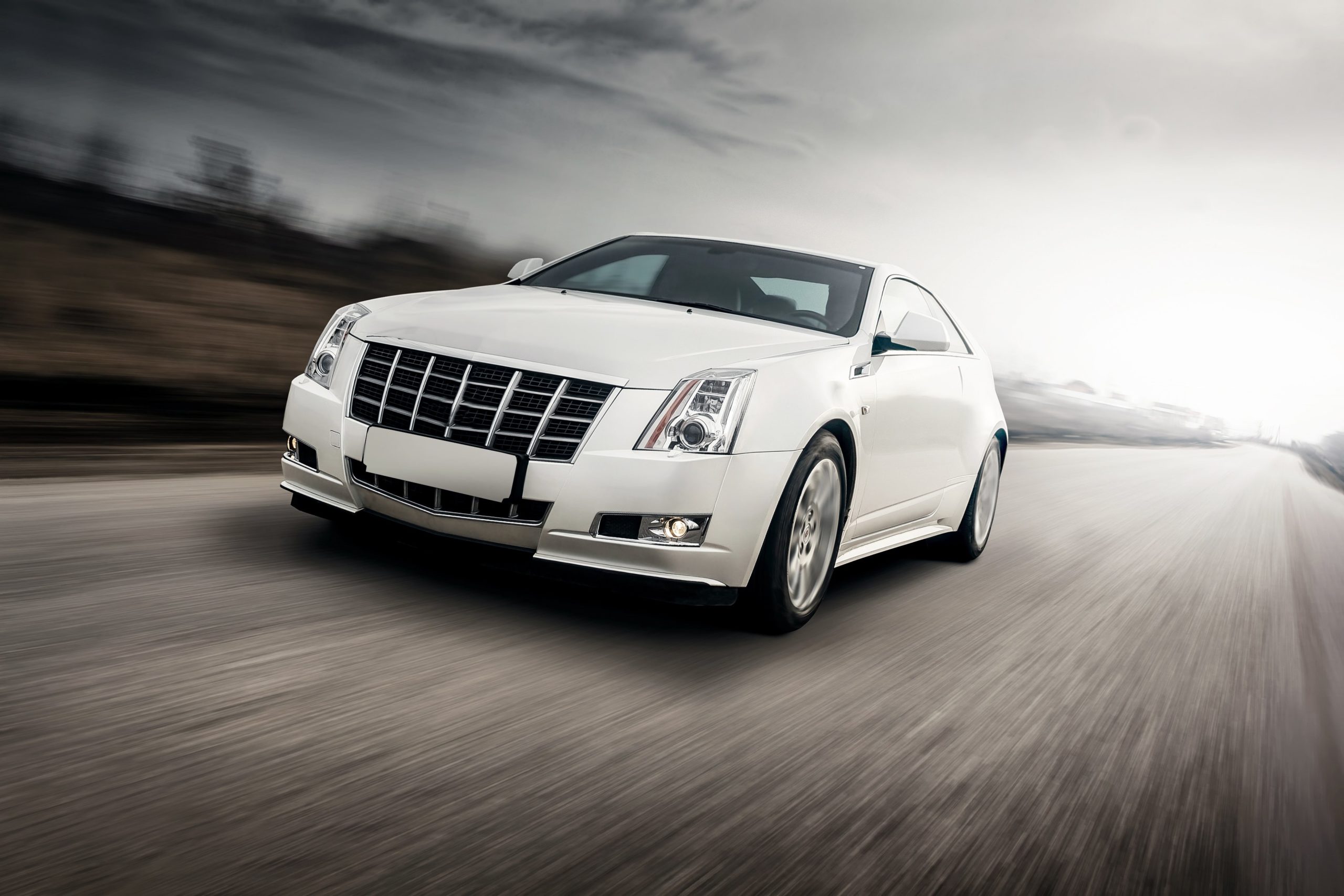Compare Canadian vs. US Car Insurance: Rates, Discounts, & Requirements [2025]
Canadian car insurance vs. US car insurance — there are a few critical differences. The Canadian government will sometimes pay injury claims. US insurance companies always pay injury claims. Canadian car insurance vs. US car insurance rate differences are just the tip of the iceberg.
Read more Secured with SHA-256 Encryption





Table of Contents
Table of Contents


Professor & Published Author
D. Gilson is a writer and author of essays, poetry, and scholarship that explore the relationship between popular culture, literature, sexuality, and memoir. His latest book is Jesus Freak, with Will Stockton, part of Bloomsbury’s 33 1/3 Series. His other books include I Will Say This Exactly One Time and Crush. His first chapbook, Catch & Release, won the 2012 Robin Becker Prize from S...
D. Gilson, PhD


Licensed Insurance Agent
Scott W Johnson is an independent insurance agent in California. Principal Broker and founder of Marindependent Insurance Services, Scott brings over 25 years of experience to his clients. His Five President’s Council awards prove he uses all he learned at Avocet, Sprint Nextel, and Farmers Insurance to the benefit of his clients. Scott quickly grasped the unique insurance requirements of his...
Scott W. Johnson
Updated May 2024
- Canada and the United States have many similar requirements for car insurance
- Both countries require proof of car insurance as well as require a minimum amount of liability coverage
- Canada and the U.S. also have many differences for car insurance
- In some Canadian provinces, the government, not the insurance company, pays injury claims
- The search process for insurance remains the same in both countries
What are the similarities between Canadian and U.S. car insurance?
Do you need car insurance in Canada? Absolutely. Despite the fact that there are many differences between these two countries, they both have some things in common when it comes to insurance. Let’s compare Canadian car insurance requirements to those of the U.S.
- It is required for any driver to have car insurance or at least proof of ability to pay for damages, or it is illegal for them to drive. Also, in both countries, you receive an insurance card when you purchase your car insurance.
- In most states, you are required to show your insurance card on demand, which is also a requirement in Canada. Much like in the U.S., it is rare for the Canadian police to pull someone over simply to check their insurance coverage.
- Also, in the U.S. there are no-fault states that don’t allow drivers to sue if an accident occurs due to negligence. In Canada, there are several provinces with this same policy. What is a no-fault insurance state? Insurance pays for repairs and injury costs, regardless of who caused the accident.
- Both countries have liability limits. In the U.S., the state sets the liability requirements. You can always get more than the minimum coverage, but the minimums are largely based on liability limits.
- If you cause an accident in the U.S. or Canada, your insurance is required to cover the cost of paying the damages. Also, if you don’t purchase comprehensive coverage, your vehicle will not be repaired.
- You will also find that both the U.S. and Canada have heavy competition regarding selling insurance. There are different options for coverage types, price differences between companies, and more.
- Both Canadian and U.S. citizens will find that they can save money on their insurance by choosing a larger deductible for their insurance policy. What is a car insurance deductible? It is the amount you agree to pay after an accident before your insurer will cover the rest of the bill. Also, there are discounts for good drivers, experienced drivers, and so on in each of these countries.
- Insurance companies are required to be licensed to sell insurance by Canadian province just like insurance companies in the U.S. Naturally, someone in either country looking for insurance has to determine whether or not a company is licensed to sell to them.
Free Insurance Comparison
Compare Quotes From Top Companies and Save
Secured with SHA-256 Encryption
What are the differences between Canadian and U.S. car insurance?
One major difference between Canadian auto insurance and U.S. coverage is that in some provinces in Canada, like Quebec, your insurance company does not pay your injury claim. The Quebec government does. Notice the stipulation to that is a claim for an injury. The idea is to minimize the burden on the system by treating injuries before they bloom into bigger emergencies.
The private insurer continues to pay any claims for the damage made to the vehicle in the course of a car accident.
This type of injury claim varies between provinces. If you’re driving in a foreign province, your Canadian insurance will temporarily increase to meet their coverage standards if they’re higher.
Read more:
- Compare Car Insurance for Traveling in Canada: Rates, Discounts, & Requirements
- Compare the Best Car Insurance Companies in Canada
Car Insurance in Canada Explained
There are other significant differences between the provinces and the states:
- The name of an insurance card in Canada is a bit different. It is called a Canadian Interprovincial Motor Vehicle Liability Insurance Card or pink card for short.
- Another interesting difference is that, in Canada, if a car is registered then it is considered to be insured. According to JamesArner (a Canadian immigration resource), if a Canadian driver stops paying his insurance, his vehicle automatically becomes unregistered. The driver is then driving illegally. This applies in a wide range of situations. Your driving record is tracked and applied in both countries, but when you drive without insurance, you’re breaking more laws in Canada.
- An impressive difference between these two countries is that some Canadian provinces require more than liability coverage for any vehicles on the road. In the U.S., liability is the only required coverage unless you have a lender that requires more coverage as part of your loan contract. There is also one US state that does not require insurance or personal injury protection. Instead, they typically ask for “proof of financial responsibility” which can be fulfilled by liability insurance or something else like a bond.
How can you save on Canadian or U.S. car insurance?
The good news is that saving money on an auto policy in either country is the same. You can get free car insurance quotes from multiple car insurance companies by using a free quote tool online. You can see who offers the lowest auto insurance premium while comparing like policies. The type of vehicle you drive, any safety features, and your coverage options also play a role in determining your premium.
In addition, you can visit individual car insurance company websites to get a quote, although that method is more time consuming.
In many cases, you will find out the best car insurance companies that sell insurance in both the U.S. and Canada. Some sell insurance in many countries across the world. So if you are making a move to a new country, you may be able to stay with the company you are both familiar and comfortable with. You would still need to call them to make sure you have the right plan, and your insurance premiums could change. Make sure that you also take advantage of discounts, as discounts in both Canada and the U.S will save you money. Take a look a the table below for examples of discount groups and savings.Average Car Insurance Discounts
| Discount Name | Allstate | American Family | Farmers | Geico | Liberty Mutual | Nationwide | Progressive | State Farm | Travelers | USAA |
|---|---|---|---|---|---|---|---|---|---|---|
| Adaptive Cruise Control | ✓ | ✓ | ✓ | ✓ | 5% | ✓ | ✓ | ✓ | ✓ | ✓ |
| Adaptive Headlights | ✓ | ✓ | ✓ | ✓ | 5% | ✓ | ✓ | ✓ | ✓ | ✓ |
| Anti-lock Brakes | 10% | ✓ | ✓ | 5% | 5% | 5% | ✓ | 5% | ||
| Anti-Theft | 10% | ✓ | 23% | 20% | 25% | ✓ | 15% | |||
| Claim Free | 35% | ✓ | ✓ | 26% | ✓ | 10% | ✓ | 15% | 23% | 12% |
| Continuous Coverage | ✓ | ✓ | ✓ | ✓ | ✓ | ✓ | 15% | ✓ | ||
| Daytime Running Lights | 2% | ✓ | 3% | 5% | 5% | ✓ | ✓ | |||
| Defensive Driver | 10% | 10% | ✓ | ✓ | 10% | 5% | 10% | 5% | 10% | 3% |
| Distant Student | 35% | ✓ | ✓ | ✓ | ✓ | 10% | ✓ | 7% | ||
| Driver's Ed | 10% | ✓ | ✓ | ✓ | 10% | ✓ | 10% | 15% | 8% | 3% |
| Driving Device/App | 20% | 40% | ✓ | ✓ | 30% | 40% | 20% | 50% | 30% | 5% |
| Early Signing | 10% | ✓ | ✓ | ✓ | ✓ | 8% | ✓ | ✓ | 10% | 12% |
| Electronic Stability Control | 2% | ✓ | ✓ | ✓ | 5% | ✓ | ✓ | ✓ | ✓ | |
| Emergency Deployment | ✓ | ✓ | ✓ | 25% | ✓ | ✓ | ✓ | ✓ | ✓ | |
| Engaged Couple | ✓ | ✓ | ✓ | ✓ | ✓ | ✓ | ✓ | ✓ | ✓ | ✓ |
| Family Legacy | ✓ | ✓ | ✓ | ✓ | ✓ | ✓ | ✓ | ✓ | ✓ | 10% |
| Family Plan | ✓ | ✓ | ✓ | ✓ | ✓ | 25% | ✓ | ✓ | ✓ | ✓ |
| Farm Vehicle | 10% | ✓ | ✓ | ✓ | ✓ | ✓ | ✓ | ✓ | ||
| Fast 5 | ✓ | ✓ | ✓ | ✓ | ✓ | ✓ | ✓ | ✓ | ✓ | ✓ |
| Federal Employee | ✓ | ✓ | 12% | 10% | ✓ | ✓ | ✓ | ✓ | ||
| Forward Collision Warning | ✓ | ✓ | ✓ | ✓ | 5% | ✓ | ✓ | ✓ | ✓ | |
| Full Payment | 10% | ✓ | ✓ | $50 | ✓ | ✓ | ✓ | 8% | ✓ | |
| Further Education | ✓ | ✓ | 10% | 15% | ✓ | ✓ | ||||
| Garaging/Storing | ✓ | ✓ | ✓ | ✓ | ✓ | ✓ | ✓ | 90% | ||
| Good Credit | ✓ | ✓ | ✓ | ✓ | ✓ | ✓ | ||||
| Good Student | 20% | ✓ | 15% | 23% | 10% | ✓ | 25% | 8% | 3% | |
| Green Vehicle | 10% | ✓ | 5% | ✓ | 10% | ✓ | ✓ | ✓ | 10% | ✓ |
| Homeowner | ✓ | ✓ | ✓ | ✓ | 5% | ✓ | 3% | 5% | ✓ | |
| Lane Departure Warning | ✓ | ✓ | ✓ | ✓ | ✓ | ✓ | ✓ | ✓ | ✓ | |
| Life Insurance | ✓ | ✓ | ✓ | ✓ | ✓ | ✓ | ✓ | ✓ | ✓ | ✓ |
| Low Mileage | ✓ | ✓ | ✓ | 30% | ||||||
| Loyalty | ✓ | ✓ | ✓ | ✓ | ✓ | 5% | ✓ | ✓ | ✓ | |
| Married | ✓ | ✓ | ✓ | ✓ | ✓ | ✓ | ||||
| Membership/Group | ✓ | ✓ | ✓ | 10% | 7% | ✓ | ✓ | |||
| Military | ✓ | ✓ | 15% | 4% | ✓ | ✓ | ||||
| Military Garaging | ✓ | ✓ | ✓ | ✓ | ✓ | ✓ | ✓ | ✓ | ✓ | 15% |
| Multiple Drivers | ✓ | ✓ | ✓ | ✓ | ✓ | ✓ | ✓ | ✓ | ✓ | ✓ |
| Multiple Policies | 10% | 29% | ✓ | 10% | 20% | 10% | 12% | 17% | 13% | |
| Multiple Vehicles | ✓ | ✓ | 25% | 10% | 20% | 10% | 20% | 8% | ||
| New Address | ✓ | ✓ | ✓ | ✓ | 5% | ✓ | ✓ | ✓ | ✓ | ✓ |
| New Customer/New Plan | ✓ | ✓ | ✓ | ✓ | ✓ | ✓ | ✓ | ✓ | ✓ | |
| New Graduate | ✓ | ✓ | ✓ | ✓ | 5% | ✓ | ✓ | ✓ | ✓ | ✓ |
| New Vehicle | 30% | ✓ | ✓ | 15% | ✓ | 40% | 10% | 12% | ||
| Newly Licensed | ✓ | ✓ | ✓ | ✓ | 5% | ✓ | ✓ | ✓ | ✓ | ✓ |
| Newlyweds | ✓ | ✓ | ✓ | ✓ | 5% | ✓ | ✓ | ✓ | ✓ | ✓ |
| Non-Smoker/Non-Drinker | ✓ | ✓ | ✓ | ✓ | ✓ | ✓ | ✓ | ✓ | ✓ | ✓ |
| Occasional Operator | ✓ | ✓ | ✓ | ✓ | ✓ | ✓ | ✓ | ✓ | ✓ | |
| Occupation | ✓ | 10% | 15% | ✓ | ✓ | ✓ | ||||
| On-Time Payments | 5% | ✓ | ✓ | ✓ | ✓ | ✓ | ✓ | 15% | ✓ | |
| Online Shopper | ✓ | ✓ | ✓ | ✓ | ✓ | ✓ | 7% | ✓ | ✓ | ✓ |
| Paperless Documents | 10% | ✓ | ✓ | ✓ | 5% | $50 | ✓ | ✓ | ✓ | |
| Paperless/Auto Billing | 5% | ✓ | ✓ | ✓ | $30 | ✓ | $20 | 3% | 3% | |
| Passive Restraint | 30% | 30% | 40% | 20% | ✓ | 40% | ||||
| Recent Retirees | ✓ | ✓ | ✓ | ✓ | 4% | ✓ | ✓ | ✓ | ✓ | ✓ |
| Renter | ✓ | ✓ | ✓ | ✓ | ✓ | ✓ | ✓ | ✓ | ✓ | ✓ |
| Roadside Assistance | ✓ | ✓ | ✓ | ✓ | ✓ | ✓ | ✓ | ✓ | ✓ | ✓ |
| Safe Driver | 45% | ✓ | 15% | ✓ | 35% | 31% | 15% | 23% | 12% | |
| Seat Belt Use | ✓ | ✓ | ✓ | 15% | ✓ | ✓ | ✓ | ✓ | ✓ | |
| Senior Driver | 10% | ✓ | ✓ | ✓ | ✓ | ✓ | ✓ | ✓ | ||
| Stable Residence | ✓ | ✓ | ✓ | ✓ | ✓ | ✓ | ✓ | ✓ | ✓ | |
| Students & Alumni | ✓ | ✓ | ✓ | 10% | 7% | ✓ | ✓ | ✓ | ||
| Switching Provider | ✓ | ✓ | 10% | ✓ | ✓ | ✓ | ✓ | |||
| Utility Vehicle | 15% | ✓ | ✓ | ✓ | ✓ | ✓ | ✓ | ✓ | ||
| Vehicle Recovery | 10% | ✓ | ✓ | 15% | 35% | 25% | ✓ | 5% | ||
| VIN Etching | ✓ | ✓ | ✓ | ✓ | 5% | ✓ | ✓ | |||
| Volunteer | ✓ | ✓ | ✓ | ✓ | ✓ | ✓ | ✓ | ✓ | ✓ | ✓ |
| Young Driver | ✓ | ✓ | ✓ | ✓ | ✓ | ✓ | ✓ | ✓ | $75 |
Read more: Safe Driver Scholarship
Most insurers offer an average of 28 discounts. So you can save a significant amount of money on your car insurance policy. These discounts will be universal, no matter if you are in Canada or the U.S. So make sure that your insurer is applying all the discounts you qualify for.

Frequently Asked Questions
What are the key differences between Canadian and US car insurance?
The main differences between Canadian and US car insurance include:
- Coverage options: The types of coverage offered may vary between Canada and the US. For example, Canadian policies typically include mandatory Accident Benefits coverage, while this is not common in the US.
- Minimum coverage requirements: Each province in Canada and each state in the US has its own minimum liability coverage requirements. These requirements can vary significantly.
- No-fault vs. tort system: Canada follows a mix of no-fault and tort insurance systems, where accident victims deal with their own insurance companies regardless of fault. In the US, most states operate under a tort system, where the at-fault driver is responsible for compensating the injured party.
- Pricing factors: The factors considered when calculating insurance premiums can differ. In the US, factors like credit score and ZIP code may influence rates, while in Canada, factors like age, driving experience, and the type of vehicle are typically more important.
- Insurance providers: The insurance market and available providers may differ between the two countries, with different companies dominating each market.
Can I use my Canadian car insurance when driving in the US or vice versa?
Generally, Canadian car insurance policies provide coverage for driving in the US, but it’s important to review your policy details to confirm this. Most policies include coverage for travel within North America. However, it’s recommended to contact your insurance provider and inform them of your plans to ensure you have adequate coverage while driving in the US or Canada.
Can I transfer my Canadian car insurance to the US or vice versa?
Car insurance policies are typically specific to the country in which the vehicle is registered. If you permanently move your vehicle from Canada to the US or vice versa, you will likely need to obtain new insurance coverage in the new country. Each insurance company will have its own guidelines and procedures for handling such transfers, so it’s important to contact your insurer to discuss your specific situation.
Are there any special considerations for Canadians driving in the US or Americans driving in Canada?
If you’re a Canadian driving in the US or an American driving in Canada, it’s important to keep the following considerations in mind:
- Carry proof of insurance: Ensure you have a valid proof of insurance for the country you are driving in.
- Familiarize yourself with local laws: Be aware of the specific traffic laws and regulations of the country you’re visiting to avoid any legal issues.
- Temporary coverage options: If you’re planning a short-term visit, some insurance companies offer temporary coverage options that can provide the necessary protection during your trip. Contact your insurance provider to inquire about temporary coverage options.
How can I compare Canadian and US car insurance policies?
To compare Canadian and US car insurance policies, consider the following steps:
- Research local insurance requirements: Familiarize yourself with the minimum coverage requirements and regulations specific to the country you are seeking coverage in.
- Gather quotes: Contact insurance providers in the respective country and request quotes for the coverage you need. Provide accurate information about your vehicle, driving history, and other relevant details to receive accurate quotes.
- Compare coverage options: Evaluate the types of coverage offered, including liability, collision, comprehensive, and any additional options you require.
- Consider pricing: Compare the premium rates provided by different insurers for the same level of coverage. Ensure you understand any additional fees, deductibles, or discounts that may apply.
- Read policy terms and conditions: Carefully review the policy details, terms, and conditions of each insurance option to understand the coverage limits, exclusions, and any special provisions.
- Seek expert advice: If you’re unsure about the specifics of comparing Canadian and US car insurance, consider consulting an insurance broker or agent who specializes in cross-border coverage to help guide you through the process.
Get a FREE Quote in Minutes
Insurance rates change constantly — we help you stay ahead by making it easy to compare top options and save.





